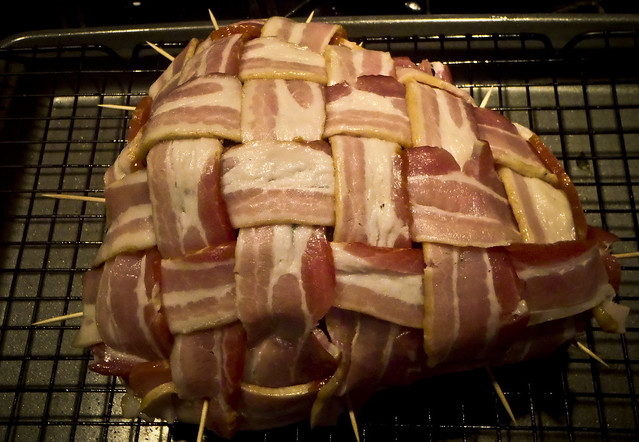
So for tonight I was thinking of Bacon and Venison.....
with Maple Juniper glaze
I have a nice Venison rump roast, I have some good quality center cut smoked bacon, I gathered some juniper berries and a 1/2 bottle of well aged Tennessee whiskey, oh wait I mean some good Vermont maple syrup.
Take the roast (well trimmed)
drizzle about 1/4 cup of maple syrup over it, some fresh cracked black pepper, about 5 smashed juniper berries (smashed as in wrap in paper towels and hit them with a hammer, leave the whiskey alone), a little sea salt and then wrap with 5-8 slices of good smoked bacon. I like to weave them over the roast leaving a little space, the drizzle with a little more maple syrup. set in the fridge for a few hours. Then roast of 400 degrees for 20 minutes, turn the heat down to about 300 and roast for another 30-40 minutes...do not over cook. About 20 minutes before the roast is done, take it out of the oven to sit. Trust me on this NEVER carve any meat taken off of a hot pan or oven right away. slice thin and serve with a pan gravy, some mashed potatoes or Jerusalem artichokes....and then sip that whiskey to help settle your overstuffed tummy.
A word about cooking game meats, yes they are lean, and no you do not need to add fat ( I just like bacon). Your either cook them to medium rare or cook them til they are mush...easy.





